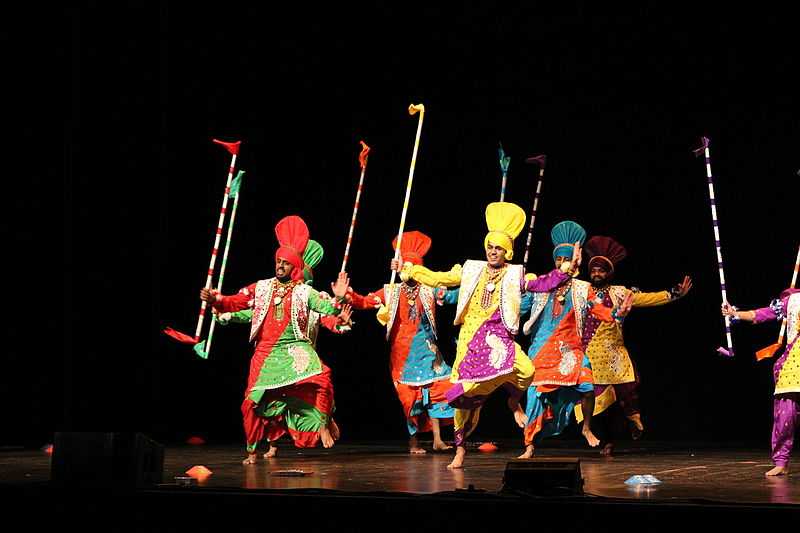Baisakhi, also known as Vaisakhi, is one of India’s most vibrant and culturally significant festivals, celebrated with great enthusiasm across the country, especially in Punjab and Haryana. This harvest festival marks the beginning of the Punjabi New Year and is a time for thanksgiving, community bonding, and spiritual reflection. Falling in the month of April, Baisakhi is also associated with the foundation of the Khalsa Panth in Sikhism, making it a festival of immense cultural, religious, and historical importance.
When is Baisakhi 2025?
In 2025, Baisakhi will be observed on Sunday, April 13. The date is based on the solar calendar, as Baisakhi marks the first day of the Hindu solar month of Vaisakha, aligning with the harvest season.The festival of Baisakhi falls on the first day of Vaisakh month (April-May), according to the Sikh Calendar. For this reason, Baisakhi is also referred to as Vaisakhi. Baisakhi also marks the Punjabi New Year. According to the English calendar, the date of Baisakhi corresponds to April 13 every year and April 14 once every 36 years. This variation is due to the festival being observed as per the Indian solar calendar. This year Baisakhi falls on 13 April.
What is Baisakhi?
Baisakhi is primarily celebrated as a harvest festival, marking the end of the rabi crop season and the onset of the new agricultural year. Farmers across northern India, especially in Punjab and Haryana, celebrate this day as an occasion to express gratitude for a bountiful harvest and pray for prosperity in the coming year.For Sikhs, Baisakhi holds special religious significance, as it commemorates the founding of the Khalsa Panth by Guru Gobind Singh Ji in 1699. This event laid the foundation for a united Sikh community committed to equality, service, and justice. The festival is celebrated with a blend of devotion, cultural performances, and community activities, making it a unique and joyous occasion.
How is Baisakhi Celebrated?

1. Early Morning Prayers at Gurudwaras
Devotees visit Gurudwaras (Sikh temples) early in the morning to offer prayers and seek blessings. Special kirtans (devotional songs) and langars (community meals) are organized, creating an atmosphere of devotion and unity.2. Nagar Kirtans (Religious Processions)
One of the most striking aspects of Baisakhi is the Nagar Kirtan, a vibrant procession led by the Guru Granth Sahib (Sikh holy scripture) carried on a decorated palanquin. Accompanied by devotional singing, martial arts displays, and traditional music, these processions bring communities together in celebration.3. Harvest Celebrations in Fields
For farmers, Baisakhi is a day to celebrate their hard work and the rewards of the harvest. Fields are decorated, and rituals are performed to thank the divine forces for a bountiful yield.
4. Traditional Dance and Music
Baisakhi is incomplete without the energetic Bhangra and Gidda dance performances. Dressed in colorful traditional attire, men and women perform these lively dances to the beats of the dhol, celebrating the joy of the harvest.
5. Feasting and Traditional Foods
Festive meals are an integral part of Baisakhi. Dishes like Makki di Roti, Sarson da Saag, Pinni, and Lassi are prepared and enjoyed by families and communities. The langars at Gurudwaras also serve delicious vegetarian meals to all attendees, emphasizing the spirit of equality and service.6. Community Fairs and Melas
Baisakhi melas (fairs) are organized in villages and towns, featuring folk music, traditional games, and stalls selling handicrafts and local delicacies. These fairs provide a platform for cultural exchange and celebration.7. Khalsa Initiation Ceremonies
For Sikhs, Baisakhi is a deeply spiritual day, as it commemorates the creation of the Khalsa Panth by Guru Gobind Singh Ji in 1699. Special ceremonies are held at prominent Gurudwaras like Golden Temple (Amritsar), where Sikhs take part in the Amrit Sanchar (baptism ceremony) to formally join the Khalsa community.Baisakhi Customs and TraditionsHistory and Significance of Baisakhi
Baisakhi was one of the three festivals that the third Sikh Guru, Guru Amar Das, chose to be celebrated by the Sikhs. In 1699, the ninth Sikh Guru, Guru Teg Bahadur, was publicly beheaded by the Mughals. This occurred due to his willingness to oppose the Mughal invaders and protect the cultural identity of Hindus and Sikhs whom the Mughal ruler Aurangzeb wanted to convert to Islam. On Baisakhi day of 1699, his son, Guru Gobind Rai, rallied the Sikhs and inspired them through his words and actions, bestowing upon them and himself the title of Singh or lion, thus becoming Guru Gobind Singh.The five Ks of Sikhism were adopted, and the Guru system was dispelled, with Sikhs being urged to accept the Granth Sahib as the eternal guide. Thus, the festival of Baisakhi is observed as the coronation of the last Sikh Guru, Guru Gobind Singh, as well as the foundation of the Khalsa Panth of Sikhism, granting it a position of immense importance to Sikhism, and is one of the biggest Sikh festivals.
Key Places to Celebrate Baisakhi 2025
1. Golden Temple, Amritsar
The Golden Temple, or Harmandir Sahib, is the focal point of Baisakhi celebrations for Sikhs. The temple is beautifully decorated, and thousands of devotees gather for prayers, kirtans, and the langar.2. Anandpur Sahib
Anandpur Sahib is the birthplace of the Khalsa and a significant site for Baisakhi celebrations. Special events and Amrit Sanchar ceremonies are held here, attracting Sikhs from all over the world.3. Villages of Punjab and Haryana
Baisakhi is celebrated with unmatched enthusiasm in the villages, where the festival retains its agricultural roots. Traditional dance, music, and fairs make the rural celebrations a lively and authentic experience.4. Cities Across India
Major cities like Delhi, Chandigarh, and Ludhiana also host Baisakhi events, including Nagar Kirtans and cultural programs.Baisakhi was also the day of the Jallianwala Bagh Massacre in 1919, when the British colonists trapped and murdered a peaceful assembly of Indians, acting as a major catalyst in the Indian freedom struggle.